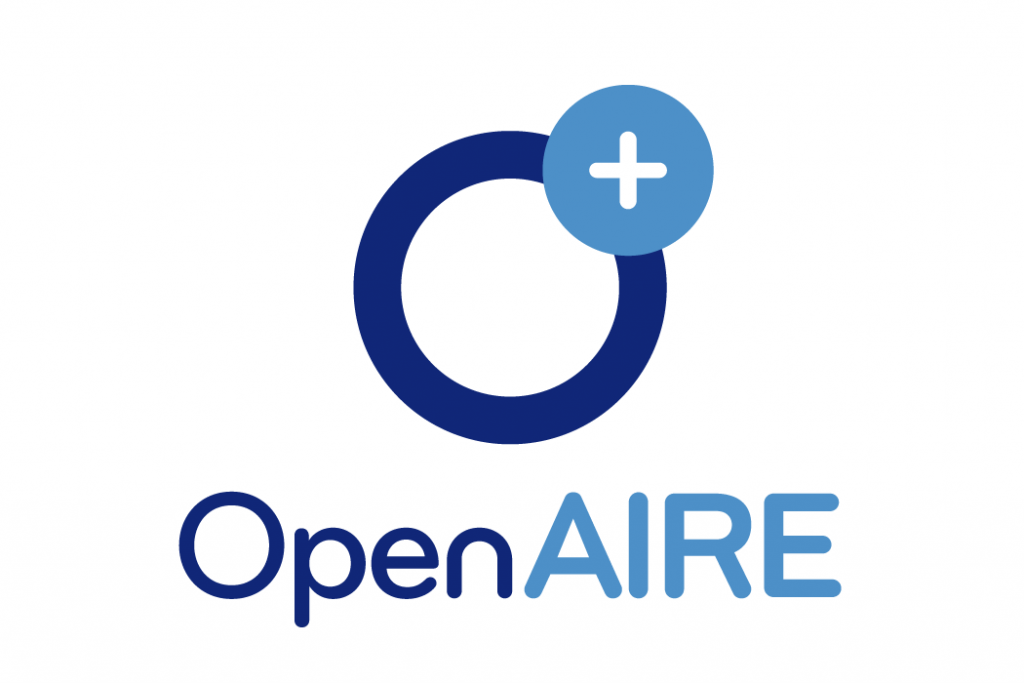Strategic, Legal, Financial, and Operational Risks for Businesses During COVID-19 Pandemic
Keywords:
Business, COVID-19, Financial risk, Legal risk, Strategic riskAbstract
The economic effect of the COVID-19 pandemic is as significant as the threat it poses to public health. Companies are negotiating a new world dealing with new risks. Organizations seek confidence in their risk management and control frameworks and reaction strategies for the short, medium, and long term as COVID-19 grows to threaten commercial life. As a result, it is critical for firms to be proactive in analyzing their risk and susceptibility from many aspects. This exploratory research seeks to discuss some major risks faced by many organizations during the pandemic, namely, the strategic, compliance, regulatory, financial, and operational risks. To thrive in this new business climate, organizations must take immediate action to limit risks and prepare for both fast and gradual recovery. Businesses that properly manage risk not only endure but also strengthen their endurance and equip themselves to capitalize on new possibilities.
References
Alhaddad, M. M. (2018a) “Artificial Intelligence in Banking Industry: A Review on Fraud Detection, Credit Management, and Document Processing,” ResearchBerg Review of Science and Technology . researchberg.com, 2(3), pp. 25–46.
Alhaddad, M. M. (2018b) “Implementing Blockchain in Public Sectors in MENA Countries: Opportunities and Challenges,” Empirical Quests for Management Essences, 2(4), pp. 30–45.
Alhaddad, M. M. (2019) “Improving Security Performance in Smart Campuses,” ResearchBerg Review of Science and Technology . researchberg.com, 1(1), pp. 17–28.
Alhaddad, M. M. (2021) “The Impact of Cloud Adoption on The SMB Profit: Evidence from Panel Data analysis,” Empirical Quests for Management Essences. researchberg.com, 1(1), pp. 51–64.
Asgary, A., Ozdemir, A. I. and Özyürek, H. (2020) “Small and Medium Enterprises and Global Risks: Evidence from Manufacturing SMEs in Turkey,” International Journal of Disaster Risk Science. Springer, 11(1), pp. 59–73.
Atieh, A. T. (2021a) “Establishing Efficient IT Operations Management through Efficient Monitoring, Process Optimization, and Effective IT Policies,” Empirical Quests for Management Essences. researchberg.com. Available at: https://researchberg.com/index.php/eqme/article/view/17.
Atieh, A. T. (2021b) “The Next Generation Cloud technologies: A Review On Distributed Cloud, Fog And Edge Computing and Their Opportunities and Challenges,” ResearchBerg Review of Science and Technology. researchberg.com. Available at: https://researchberg.com/index.php/rrst/article/view/18.
Aumann, R. J. and Dreze, J. H. (2009) “Assessing Strategic Risk,” American Economic Journal: Microeconomics. aeaweb.org, 1(1), pp. 1–16.
Barrieu, P. and El Karoui, N. (2004) “Optimal risk transfer,” Finance. stats.lse.ac.uk. Available at: http://stats.lse.ac.uk/barrieu/Publications/structuration_finance.pdf.
Bassan, S. (2020) “Data privacy considerations for telehealth consumers amid COVID-19,” Journal of law and the biosciences. academic.oup.com, 7(1), p. lsaa075.
Beasley, M. S., Frigo, M. L. and Litman, J. (2007) “STRATEGIC RISK MANAGEMENT: CREATING AND PROTECTING VALUE,” Strategic Finance; Montvale. search.proquest.com, pp. 24–31. Available at: https://search.proquest.com/openview/bfceef5d9167440c9376504c7da9d507/1?pq-origsite=gscholar&cbl=48426.
Bentotahewa, V., Hewage, C. and Williams, J. (2021) “Solutions to Big Data privacy and security challenges associated with COVID-19 surveillance systems,” Frontiers in big data. Frontiers Media SA, 4, p. 645204.
Bloom, N. (2009) “The impact of uncertainty shocks,” Econometrica: journal of the Econometric Society. The Econometric Society, 77(3), pp. 623–685.
Born, B. (2014) “Operational risk management.” cefpro.com. Available at: https://www.cefpro.com/wp-content/uploads/2019/07/Beate-Born-article.pdf.
Bryant, J. M. and Hagg-Rickert, S. (2001) “Development of a risk management program,” The Jossey-Bass/AHA Press Series. booksfree.org. Available at: https://www.booksfree.org/wp-content/uploads/2021/02/Roberta_Carroll_American_Society_for_Healthcare_.pdf#page=74.
Cai, M. and Luo, J. (2020) “Influence of COVID-19 on Manufacturing Industry and Corresponding Countermeasures from Supply Chain Perspective,” Journal of Shanghai Jiaotong University (science). Springer, 25(4), pp. 409–416.
Calkins, H. (1989) “The case for a legal risk strategy,” The Journal of business strategy. emerald.com. Available at: https://www.emerald.com/insight/content/doi/10.1108/eb060061/full/html.
Crozet, M., Milet, E. and Mirza, D. (2016) “The impact of domestic regulations on international trade in services: Evidence from firm-level data,” Journal of comparative economics, 44(3), pp. 585–607.
Deloitte (2020) Cyber crime – the risks of working from home, Deloitte Switzerland. Available at: https://www2.deloitte.com/ch/en/pages/risk/articles/covid-19-cyber-crime-working-from-home.html
Evenett, S. et al. (2020) “Trade policy responses to the COVID-19 pandemic: Evidence from a new dataset.” Centre for economic policy research.
Faraj, S., Renno, W. and Bhardwaj, A. (2021) “Unto the breach: What the COVID-19 pandemic exposes about digitalization,” Information and Organization. Elsevier. Available at: https://www.sciencedirect.com/science/article/pii/S1471772721000038.
Frigo, M. L. and Anderson, R. J. (2011) “Strategic risk management: A foundation for improving enterprise risk management and governance,” Journal of corporate accounting & finance. Wiley, 22(3), pp. 81–88.
Galeeva, G. M., Ivanov, M. E. and Vafin, A. Y. (2016) “The innovative development of the industrial economy of Russia,” core.ac.uk. Available at: https://core.ac.uk/download/pdf/197473691.pdf.
Guerrieri, V. et al. (2020) “Macroeconomic Implications of COVID-19: Can Negative Supply Shocks Cause Demand Shortages?” National Bureau of Economic Research (Working Paper Series). doi: 10.3386/w26918.
Kizil, C., Kizil, F. and Dolaz, B. (2021) “Reconsidering the Role of Internal Controls in the COVID-19 Era,” The Institute for Internal Controls (IIC) e. doi: 10.2139/ssrn.3992431.
Kurer, P. (2015) Legal and compliance risk. London, England: Oxford University Press.
Kuritzkes, A. (2002) “Operational risk capital: a problem of definition,” Journal of Risk Finance. emerald.com. Available at: https://www.emerald.com/insight/content/doi/10.1108/eb022954/full/html.
Liu, Y., Lee, J. M. and Lee, C. (2020) “The challenges and opportunities of a global health crisis: the management and business implications of COVID-19 from an Asian perspective,” Asian Business & Management. Springer, 19(3), pp. 277–297.
Markides, C. C. (2013) Game-changing strategies: How to create new market space in established industries by breaking the rules. John Wiley & Sons.
Moosa, I. A. (2007) “Operational risk management.” Springer. Available at: https://link.springer.com/content/pdf/10.1057/9780230591486.pdf.
Mosteanu, N. R. (2020) “Artificial intelligence and cyber security–face to face with cyber attack–a maltese case of risk management approach,” Ecoforum Journal. ecoforumjournal.ro. Available at: http://www.ecoforumjournal.ro/index.php/eco/article/view/1059.
Moşteanu, N. R. (2020) “Challenges for Organizational Structure and design as a result of digitalization and cybersecurity,” The Business & Management Review. Centre for Business & Economic Research, 11(1), pp. 278–286.
Mulyaningsih, T., Cahyadin, M. and Sarmidi, T. (2021) “Firms’ Financial Distress during the COVID-19 Pandemic and fiscal incentives.” ERIA: Economic Research Institute for ASEAN & East Asia. Available at: https://policycommons.net/artifacts/2052832/firms-financial-distress-during-the-covid-19-pandemic-and-fiscal-incentives/2805923/
Mun, J. (2010) “Modeling risk: Applying Monte Carlo risk simulation, strategic real options, stochastic forecasting, and portfolio optimization.” books.google.com. Available at: https://books.google.com/books?hl=en&lr=&id=Yr35WqZGVr0C&oi=fnd&pg=PP32&dq=Operational+risks+model+risk,+which+pertains+marketing+risk.&ots=1Dwx60tftO&sig=G57wwDTXExN9wn0z4QYBhONtur8.
OECD (2020) Building back better: A sustainable, resilient recovery after COVID-19, OECD. Available at: https://www.oecd.org/coronavirus/policy-responses/building-back-better-a-sustainable-resilient-recovery-after-covid-19-52b869f5/
Ramakrishna, S. (2015) Enterprise compliance risk management. 1st ed. Nashville, TN: John Wiley & Sons (Wiley Corporate F&A).
Regulatory Risk (2020) Corporate Finance Institute. Available at: https://corporatefinanceinstitute.com/resources/knowledge/finance/regulatory-risk/
Sadgrove, K. (2016) “The complete guide to business risk management.” taylorfrancis.com. Available at: https://www.taylorfrancis.com/books/mono/10.4324/9781315614915/complete-guide-business-risk-management-kit-sadgrove.
Samad-Khan, A. (2008) “Modern operational risk management,” Emphasis, nursing / Los Angeles County, Harbor-UCLA Medical Center, Nursing Department. stamfordrisk.com. Available at: https://www.stamfordrisk.com/pdf/Modern_Operational_Risk_Management.pdf.
Sheth, J. (2020) “Business of business is more than business: Managing during the Covid crisis,” Industrial Marketing Management. Elsevier, 88, pp. 261–264.
Vafin, A. (2017) “Negotiation with Dominant Supplier: Power Determination, Partnership, and Joint Buying,” International Journal of Contemporary Financial Issues. hcommons.org. Available at: https://hcommons.org/deposits/item/hc:44887/.
Vafin, Aidar (2018) “Should Firms Lower Product Price in Recession? A Review on Pricing Challenges for Firms in Economic Downturn,” ResearchBerg Review of Science and Technology . researchberg.com, 2(3), pp. 1–24.
Vafin, A. (2018) “Volume Discount Sensitivity Analysis for Optimal Pricing Strategies in B2B Firms,” Empirical Quests for Management Essences. researchberg.com, 2(4), pp. 15–29.
Vafin, A. M. et al. (2012) “Improvement of regional economic policy in the municipalities of the Republic of Tatarstan,” Bulletin of the Kazan State. Available at: https://scholar.google.ca/scholar?cluster=904444820856570469&hl=en&as_sdt=0,5&sciodt=0,5.
Vafin, A. M., Morozov, A. V. and Galeeva, G. M. (2012) “Conditions and mechanisms of investment support innovative regional economic development,” Bulletin of Kazan State Technological University. Available at: https://scholar.google.ca/scholar?cluster=13118339938906835903&hl=en&as_sdt=0,5&sciodt=0,5.
Vafin, A. M., Morozov, A. V. and Galeeva, G. М. (2012) “Conditions and mechanisms of investment support of innovative development of regional economy,” Bulletin of Kazan Technological University. Available at: https://scholar.google.ca/scholar?cluster=10816658587039665617&hl=en&as_sdt=0,5&sciodt=0,5.
Waring, A. (2015) “Managerial and non-technical factors in the development of human-created disasters: A review and research agenda,” Safety science. Elsevier. Available at: https://www.sciencedirect.com/science/article/pii/S0925753515001575.
World Bank (2020) Global economic prospects, June 2020: slow growth, policy challenges. Washington, D.C., DC: World Bank Publications.
World Bank Group (2021) Supporting firms in restructuring and recovery. World Bank.
Вафин, А. М. (2012) “Индикативное планирование как основа стратегического развития промышленного комплекса Республики Татарстан,” Научные труды Центра перспективных. elibrary.ru. Available at: https://elibrary.ru/item.asp?id=20789721.
Вафин, А. М. (2013) “Индикативное планирование как инструмент реализации промышленной политики в регионе,” Вестник экономики, права и социологии. cyberleninka.ru. Available at: https://cyberleninka.ru/article/n/indikativnoe-planirovanie-kak-instrument-realizatsii-promyshlennoy-politiki-v-regione.
Посталюк, М. П. and Вафин, А. М. (2014) “ИННОВАТИЗАЦИЯ УПРАВЛЕНИЯ ПРОМЫШЛЕННЫМ КОМПЛЕКСОМ В ЛОКАЛЬНЫХ ЭКОНОМИЧЕСКИХ СИСТЕМАХ,” Вестник ТИСБИ. elibrary.ru. Available at: https://elibrary.ru/item.asp?id=45816138.

Downloads
Published
How to Cite
Issue
Section
License
Copyright (c) 2021 Author

This work is licensed under a Creative Commons Attribution-NonCommercial-NoDerivatives 4.0 International License.
Creative Commons licenses are used to publish Open Access articles, which provide the legal basis for users to access, distribute, and reuse the content. EQME allows authors to apply one of the following Creative Commons licenses to their work, each of which affords readers distinct rights in terms of commercial use and the capacity to create derivative versions:
CC-BY (Creative Commons Attribution License)
CC-BY-NC-ND (Creative Commons Non-Commercial No Derivatives License)
CC-BY-NC-SA (Creative Commons Non-Commercial Share-a-like)
In each situation, the creator must be given credit, and if derivative versions of the work are created, the alterations must be noted.






